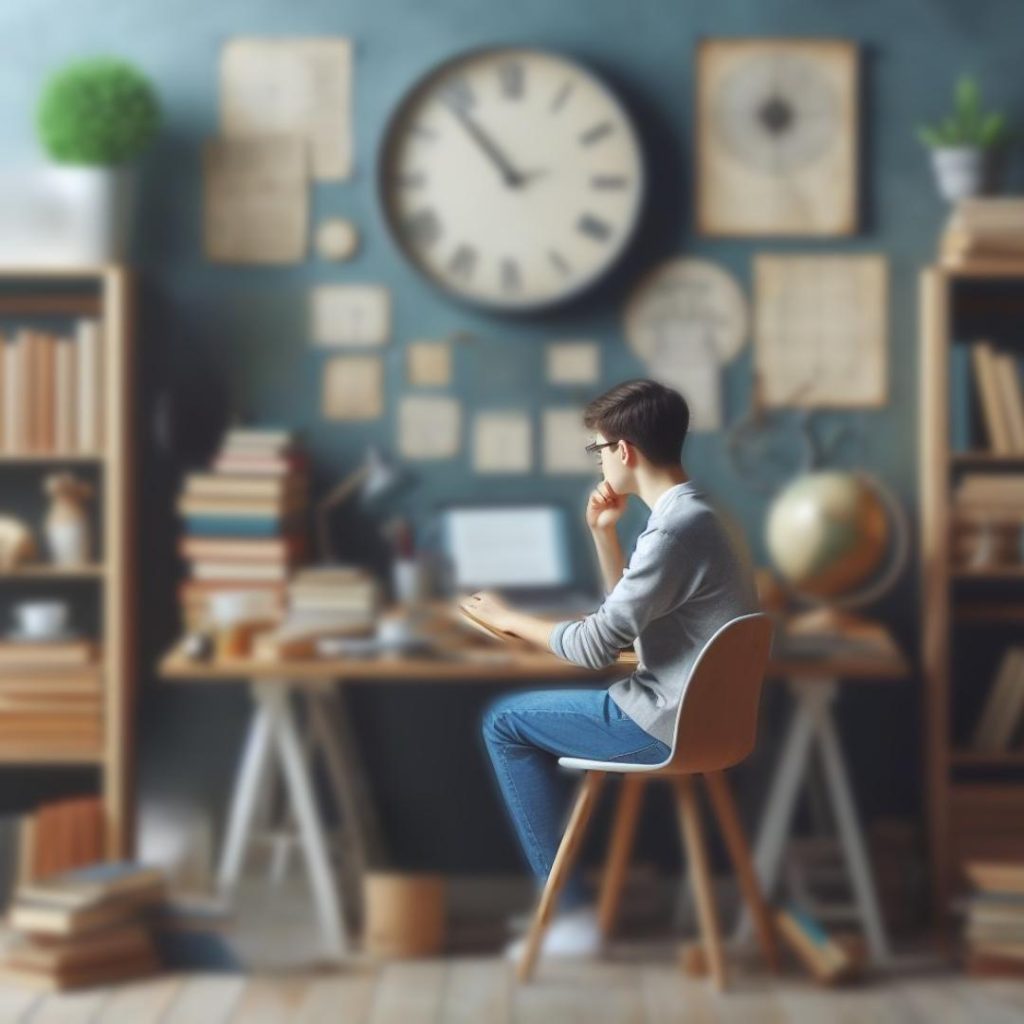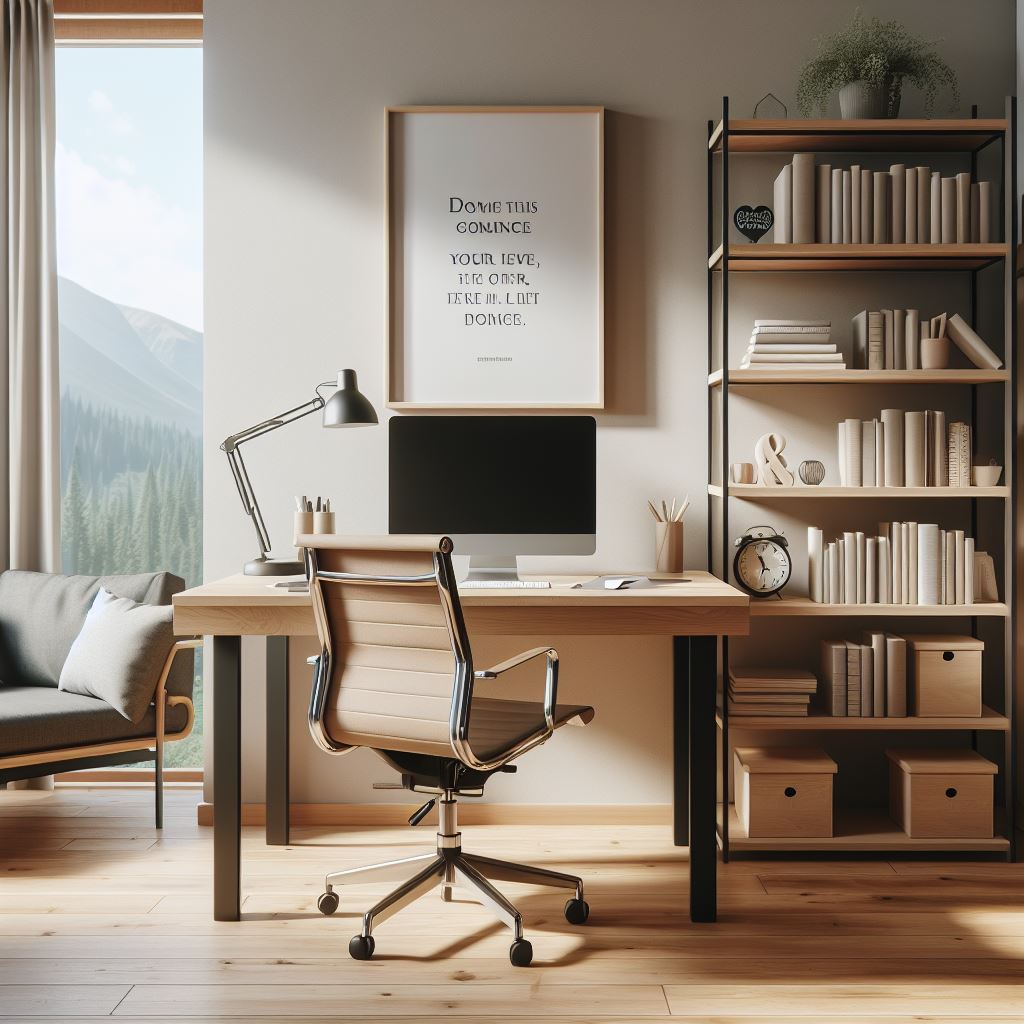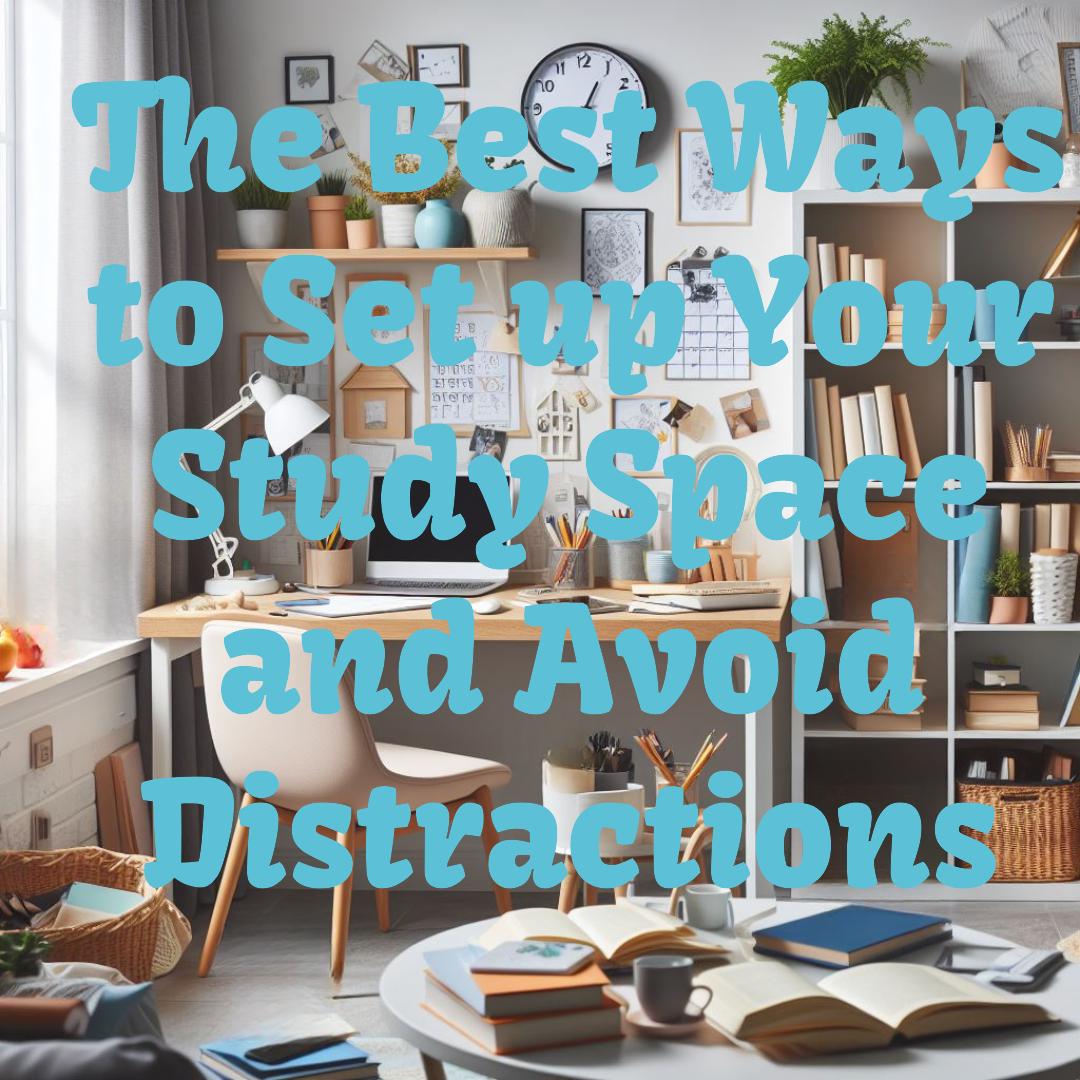Introduction
Having a good study space can make a big difference in your performance and well-being. It can help you stay focused, motivated, and comfortable while you study. On the other hand, having a bad study space can hinder your progress and cause you stress, frustration, and fatigue. It can expose you to various distractions that can disrupt your concentration, memory, and productivity.
In this article, I’ll expose you to how to set up your study space and avoid distractions. Covering three main aspects of creating a good study space: comfort, organization, and productivity.
How to Create a Comfortable Study Space
One of the first things you need to consider when setting up your study space is comfort. Comfort is the state of being physically and mentally relaxed and at ease. When you are comfortable, you can study for longer periods of time without feeling tired, sore, or bored. Comfort depends on several factors, such as your desk, your chair, your lighting, your temperature, and your noise level. Here are some tips and examples for choosing or adjusting these factors to create a comfortable study space:
– Desk: Your desk should be spacious enough to accommodate your books, notebooks, laptop, and other materials. It should also be at a suitable height for your posture and your vision. You should be able to sit straight and look at your screen or your paper without bending your neck or your back. If your desk is too high or too low, you can use a riser or a cushion to adjust it. For example, you can use a stack of books or a cardboard box to raise your laptop or your monitor. You can also use a pillow or a towel to lower your chair or your seat.
– Chair: Your chair should be comfortable and supportive for your back, your arms, and your legs. It should allow you to sit with your feet flat on the floor and your knees at a 90-degree angle. It should also have a backrest that supports your lower back and your shoulders. If your chair is too hard or too soft, you can use a cushion or a blanket to make it more comfortable. For example, you can use a memory foam or a gel pad to add some padding to your chair. You can also use a lumbar pillow or a rolled-up towel to support your lower back.
– Lighting: Your lighting should be bright enough to see your materials clearly, but not too bright to cause glare or eye strain. You should avoid direct sunlight or overhead lights that can create shadows or reflections on your screen or your paper. You should also avoid dim or flickering lights that can make you sleepy or dizzy. You can use natural light, desk lamps, or floor lamps to create a good lighting for your study space. For example, you can place your desk near a window or a balcony to get some natural light. You can also use a desk lamp or a floor lamp with a warm or a cool bulb to adjust the brightness and the color of your light.
– Temperature: Your temperature should be neither too hot nor too cold for your comfort. You should avoid extreme temperatures that can make you sweat or shiver, or that can affect your blood circulation or your metabolism. You can use fans, heaters, air conditioners, or windows to regulate the temperature of your study space. For example, you can use a fan or a heater to create some airflow or some warmth in your room. You can also use an air conditioner or a window to cool down or to ventilate your room.
– Noise: Your noise level should be low enough to avoid distractions, but not too low to make you feel isolated or bored. You should avoid loud or sudden noises that can interrupt your focus or your mood, such as traffic, construction, or people talking. You can use headphones, earplugs, or music to block out or to mask the noise in your study space. For example, you can use headphones or earplugs to cancel out the noise from outside or from other rooms. You can also use music or white noise to create some background sound or some ambiance in your room.

How to Organize Your Study Space
Another thing you need to consider when setting up your study space is organization. Organization is the state of being orderly and systematic. When you are organized, you can study more efficiently and effectively. You can save time, avoid clutter, and enhance your focus. Organization depends on several factors, such as your supplies, your materials, your files, and your digital devices. Here are some tips and examples for keeping these factors neat, accessible, and up-to-date:
– Supplies: Your supplies are the tools and the accessories that you use for your study, such as pens, pencils, highlighters, erasers, rulers, calculators, and sticky notes. You should keep your supplies in a designated place, such as a drawer, a tray, a basket, or a pouch. You should also keep your supplies organized by type, color, or function, and label them if necessary. For example, you can use a drawer organizer or a pencil case to store your pens, pencils, and highlighters. You can also use a color-coding system or a sticker system to categorize your supplies by subject, topic, or priority.
– Materials: Your materials are the sources and the documents that you use for your study, such as books, notebooks, papers, handouts, and flashcards. You should keep your materials in a specific place, such as a shelf, a rack, a folder, or a binder. You should also keep your materials organized by subject, topic, or date, and label them if necessary. For example, you can use a bookshelf or a magazine rack to store your books, notebooks, and papers. You can also use a filing system or a tab system to sort your materials by subject, topic, or date.
– Files: Your files are the data and the information that you use for your study, such as notes, slides, articles, images, and videos. You should keep your files in a secure place, such as a hard drive, a cloud service, a USB stick, or a CD. You should also keep your files organized by name, type, or format, and label them if necessary. For example, you can use a hard drive or a cloud service to store your notes, slides, articles, images, and videos. You can also use a naming system or a folder system to arrange your files by name, type, or format.
– Digital Devices: Your digital devices are the gadgets and the machines that you use for your study, such as laptops, tablets, smartphones, printers, and scanners. You should keep your digital devices in a safe place, such as a desk, a stand, a case, or a bag. You should also keep your digital devices organized by function, purpose, or usage, and label them if necessary. For example, you can use a desk or a stand to place your laptop, tablet, or smartphone. You can also use a function key or a shortcut key to switch between your digital devices by function, purpose, or usage.
How to Avoid Distractions in Your Study Space

The last thing you need to consider when setting up your study space is productivity. Productivity is the state of being efficient and effective. When you are productive, you can study more quickly and more thoroughly. You can achieve more, learn more, and improve more. Productivity depends on several factors, such as your notifications, your messages, your social media, your games, and your other people. Here are some tips and examples for minimizing or eliminating these factors to create a productive study space:
– Notifications: Your notifications are the alerts and the reminders that you receive from your digital devices, such as emails, calls, texts, and alarms. You should turn off or mute your notifications when you study, unless they are urgent or important. You should also set a schedule or a timer for checking your notifications, such as once every hour or after every task. For example, you can use the do not disturb mode or airplane mode to turn off or mute your notifications from your laptop, tablet, or smartphone. You can also use a calendar app or a stopwatch app to set a schedule or a timer for checking your notifications.
– Messages: Your messages are the communications and the conversations that you have with your friends, family, or classmates, such as chats, calls, or video calls. You should avoid or limit your messages when you study, unless they are related or helpful to your study. You should also inform or ask your contacts to respect your study time, and to contact you only when necessary or appropriate. For example, you can use the silent mode or the busy mode to avoid or limit your messages from your friends, family, or classmates. You can also use a status message or a reply message
– Social Media: Your social media are the platforms and the networks that you use to connect and to share with your online communities, such as Facebook, Twitter, Instagram, and YouTube. You should avoid or reduce your social media when you study, unless they are relevant or useful to your study. You should also set a goal or a reward for using your social media, such as after completing a task or a session. For example, you can use the block mode or the limit mode to avoid or reduce your social media from your laptop, tablet, or smartphone. You can also use a goal app or a reward app to set a goal or a reward for using your social media.
– Games: Your games are the activities and the entertainments that you use to have fun and to relax, such as puzzles, cards, or video games. You should avoid or postpone your games when you study, unless they are educational or beneficial to your study. You should also set a time or a frequency for playing your games, such as once a day or once a week. For example, you can use the uninstall mode or the password mode to avoid or postpone your games from your laptop, tablet, or smartphone. You can also use a timer app or a tracker app to set a time or a frequency for playing your games.
– Other People: Your other people are the individuals and the groups that you interact and socialize with, such as your friends, family, or classmates. You should avoid or manage your other people when you study, unless they are supportive or helpful to your study. You should also set a boundary or a rule for dealing with your other people, such as do not disturb or study together. For example, you can use a sign or a lock to avoid or manage your other people from your room or your house. You can also use a boundary message or a rule message to set a boundary or a rule for dealing with your other people.
Conclusion
Your study space is your personal and professional space. It reflects your personality and your goals. It influences your mood and your behavior. It affects your outcomes and your results. Therefore, make sure you create a study space that works for you and increases productivity.



